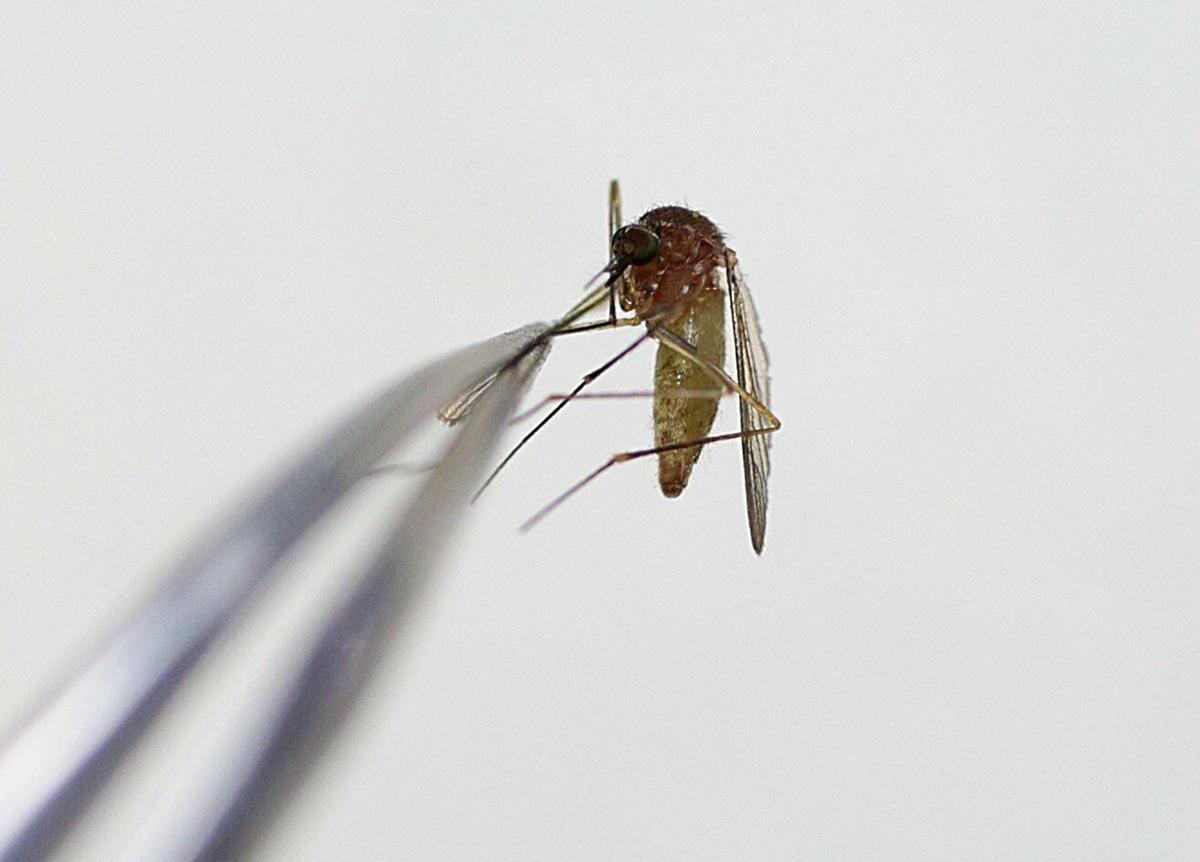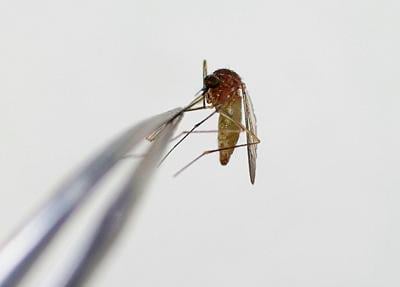ST. LOUIS ÔÇö Spring rains have brought more mosquitoes to the region, and experts say theyÔÇÖre seeing more of the species that bite and itch rather than those that spread diseases to humans.
And at the same time, officials say, citizen scientists here are helping experts identify mosquito species that typically donÔÇÖt live this far north.
ÔÇťItÔÇÖs been a really wet spring,ÔÇŁ said James Sayers, environmental manager of Ëú╠Ď╩ËĂÁ CountyÔÇÖs vector-borne disease prevention program, which monitors mosquitoes. ÔÇťAnd in any water that is standing ÔÇö not flowing ÔÇö they breed.ÔÇŁ
Although the spring offered plenty of rain, Sayers said the county is not expecting higher numbers of Culex mosquitoes, the variety that carries disease. Those prefer the murky standing water in storm sewers. The frequent rains wash that away, he said, decreasing their numbers.
People are also reading…
But the other species of mosquitoes that donÔÇÖt spread diseases but still bite, aptly called nuisance mosquitoes, are happy to make rainwater their breeding ground.
During mosquito season (typically mid-March to late October) Sayers and his team are ÔÇťboots on the ground,ÔÇŁ surveying the 250 trap sites around Ëú╠Ď╩ËĂÁ County. Of the 56 mosquito species in the area, crews focus on the Culex and look for two things: bug population and the diseases they might carry, such as West Nile virus.
Some Ëú╠Ď╩ËĂÁ-area residents are joining the mission to eliminate disease-carrying mosquitoes by using an app, Mosquito Alert STL, to upload pictures of mosquitoes they encounter. The citizen-science program, through the Missouri Botanical Garden, helps entomologists track species over time.
Mosquito Alert STL has been especially important for identifying mosquitoes not normally found this far north ÔÇö and to swiftly notice others should they arrive, said Jean Ponzi, green resources manager at MoBOT. Ëú╠Ď╩ËĂÁ is the first U.S. city to use the app, she said.
County mosquito traps fill up quickly, making them less than ideal for finding new species in the area, Sayers said.
ÔÇťThe power of the individual to make a difference is so beautifully exemplified in Mosquito Alert STL,ÔÇŁ Ponzi said.
Mosquitoes often travel between countries via cargo ships, she said. When they arrive in the U.S., they look for a home that is conducive to their reproduction cycle.
ÔÇťThe hotter it gets, their reproduction cycle speeds up,ÔÇŁ Ponzi said. ÔÇťThey migrate northward as the climate shifts.ÔÇŁ
Aedes aegypti, the yellow fever mosquito, is especially good at transmitting diseases like dengue fever and Zika virus to humans. Their cousin, Aedes albopictus or tiger mosquito, has already made its way to Ëú╠Ď╩ËĂÁ. However, the tiger mosquito doesnÔÇÖt feed on humans exclusively, making it the inferior vector of disease between the two.
While there have been no locally spread cases of Zika virus in Missouri, according to the state Department of Health and Senior Services, that could change if the yellow fever mosquito establishes a population here.
Ëú╠Ď╩ËĂÁ County and Ëú╠Ď╩ËĂÁ will provide mosquito fogging to reduce mosquito populations at the request of concerned residents, though crews will first inspect an area to see if there are other reasonable management options.
The city and county are prioritizing targeting mosquito larvae populations. This type of integrated management for mosquitoes is recommended by the U.S. Centers for Disease Control and Prevention as well as the Environmental Protection Agency.
ÔÇťA lot of people worry about our pollinators, and we do too,ÔÇŁ Sayers said. BTI ÔÇö Bacillus thuringiensis isrealensis ÔÇö is a bacterium that, when eaten by a mosquito larvae, ruptures, stopping the mosquito before it can start.
ÔÇťThe coolest thing about BTI is that itÔÇÖs 100% safe for everything else,ÔÇŁ Sayers said. ÔÇťItÔÇÖs only harmful to mosquito and blackfly larvae.ÔÇŁ
Sayers and Ponzi recommend removing any standing water as a way to prevent mosquitoes ÔÇö and investing in a fan. Mosquitoes are extremely weak flyers, so keeping a fan on while spending time outside will keep the insects from getting close enough to feed.
ÔÇťThe best thing for residents to do is to get a big box fan,ÔÇŁ Sayers said. ÔÇťPlus, it keeps you cool.ÔÇŁ
Ëú╠Ď╩ËĂÁ photographers captured May 2024 in hundreds of images. Here are just some of those photos. Edited by Jenna Jones.









